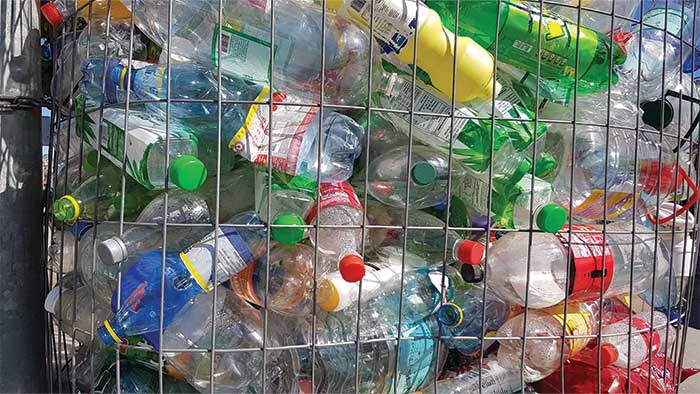Top Environmental Compliance Retail Trends in 2022
- By [ Tiffin Shewmake ]
- 12/09/2021
In 2022, retailers can expect to see some familiar compliance issues as well as emerging areas of concern. Regulatory developments will be influenced by the increased urgency to act in some areas, such as climate change, environmental justice, and other Biden Administration policy priorities, as well as a growing focus on environmental performance from the public and financial community. The combination of these drivers will likely result in additional regulatory requirements on top of existing ones, new enforcement targets by regulatory agencies, and an increased need for visibility of corporate environmental performance. All this means that the pace of change and the challenges for retail compliance programs will remain high in 2022.
The need to address environmental risks such as climate change and waste, especially plastic, is changing the operational and compliance landscape for retail. Areas that were formerly seen as voluntary sustainability programs are evolving into mandates as jurisdictions pass new laws to address these problems and as companies increasingly set voluntary public goals. The growing focus in the investor community on the environmental performance of companies as part of the environmental, social, governance (ESG) lens puts pressure on companies to not only improve their environmental performance but also to be more transparent about their impacts and activities.
The top issues cover existing as well as emerging compliance areas for the retail industry, primarily at the facility or operational level. The issues are (in no particular order): hazardous waste, solid waste, refrigerants, and chemicals in products. In some cases, implementing a strong compliance program is adequate for achieving compliance and reducing risk. However, many of these emerging issues are at the intersection of sustainability and compliance which will require companies to reimage their operations and implement more sustainable mindsets. This approach has the potential to not only reduce risk but to also improve the company’s ESG profile, enhance resilience, and respond to consumer concerns.
Hazardous Waste
Hazardous waste continues to be a chart-topper with significant regulatory risk for retailers, especially in certain states. While many retailers have implemented strong compliance programs for hazardous waste, others continue to face enforcement actions that can cost thousands to millions of dollars. The regulatory risk is particularly high in California, and this will no doubt continue for the foreseeable future. However, recent changes to streamline hazardous waste regulations, which the states are slowly implementing, should somewhat help reduce the regulatory burden.
These changes include the Generator Improvements Rule, Pharmaceutical Waste Rule, and the addition of aerosol cans to the universal waste list. Most states must adopt these changes before they are in effect at the state level and are not required to accept sections considered less stringent than the current regulations. While many states have adopted all or part of these rules, a number are very slow and have not yet even adopted the 2016 Generator Improvements Rule. As more states pick up these rules, retailers should evaluate their hazardous waste programs to ensure that they are benefiting from the changes. For example, reviewing facility hazardous waste generator categories is important because changes in the status of nicotine and aerosol cans have the potential to reduce the generator status (but again, that depends on the specific state).
Waste lithium batteries is another evolving issue. The potential for fires in the waste stream has been growing as lithium batteries become more plentiful and more powerful. The U.S. Environmental Protection Agency (EPA) recently conducted “An Analysis of Lithium-ion Battery Fires in Waste Management and Recycling.” The EPA is encouraging generators to treat lithium batteries as universal waste, although it is not clear if all lithium batteries are considered hazardous waste. It is likely that the EPA will look for ways to manage waste batteries to reduce the risk of fire. At the same time, the U.S. Department of Transportation (DOT) continues to update hazardous materials regulations on shipping lithium batteries to meet the changing battery landscape. As the use and power of lithium batteries is expected to continue growing, so will the regulatory risks.
RCC resources:
- Retail Hazardous Waste Program Success for 2022: A Refresher Course Webinar
- Hazardous Waste Generator Improvement Rule Matrix
- Pharm Rule State Implementation Matrix
- Aerosols as Universal Waste Rule Tracking Matrix
- Hazardous Waste Variations by State Matrix
- Lithium Batteries Fact Sheet
Solid Waste
The increasing pressure to better manage solid waste is driven by the crisis of plastics in the environment (not just the oceans- plastic is found in food, drinking water, and our bodies), low U.S. recycling rates, inadequate infrastructure, the need to reduce greenhouse gas (GHG) emissions, and the growth of waste from e-commerce. In 2021, state legislatures were active in considering and passing a wide range of bills related to recycling and waste, thus moving the term “circular economy” from concept to regulatory requirement. The EPA also recently released a National Recycling Strategy with a focus on improving recycling and working towards a circular economy. Efforts to reduce waste, improve recycling and implement a circular economy approach will undoubtedly continue in 2022.

One approach to increase recycling is to simply mandate it or, as in the case of bottle bills, create financial incentives to encourage consumers to recycle. Some states and local jurisdictions currently have recycling requirements, typically for commonly recycled material such as paper, plastics, metals, glass, and, in some cases, organics (e.g., food waste, landscaping material and compostable products). These regulations (for example, California’s organics mandate) often require local jurisdictions to develop and manage the recycling programs. While this makes sense, as solid waste has long been a local issue, it also means that there can be multiple programmatic differences across a state.
States are also looking at how to reduce the overall volume of waste, especially plastic waste. Regulations around plastic waste initially focused on plastic carryout bags with bans and fees, or in some cases went in the other direction with states banning local jurisdictions from legislating the use of plastic bags. However, regulations increasingly include bans on single-use plastic items such as straws, disposable utensils, and food service containers. It is likely that such bans will continue to proliferate.
States are also pursing Extended Producer Responsibility (EPR) laws to reduce waste, provide incentives for eco-friendly packaging, and shift the cost of managing waste from communities to producers. In 2021, Maine became the first state to pass EPR legislation, with Oregon following closely behind. EPR typically requires producers (which may include distributors) to pay a fee for packaging (often with incentives for environmentally friendly characteristics), fund a packaging stewardship organization to help build and manage recycling infrastructure, and other elements such as reporting and consumer education requirements or restrictions on certain types of materials. EPR bills have been introduced in states across the country and this approach is likely to continue gaining traction as jurisdictions look for solutions for waste.
There are also ongoing initiatives focused on strengthening the recycling infrastructure in the U.S. This includes state actions ranging from studies to new funding for recycling programs. There are also NGO-led efforts such as Closed Loop Partners and The Recycling Partnership, both of which make grants and advocate for improved infrastructure and increased recycling availability. With an increased scrutiny on product recycling claims from states, in lawsuits and the Federal Trade Commission (which is planning to update the Green Guides in 2022), improved funding for recycling infrastructure will make such claims more realistic and support corporate recycling goals. However, an important element of increasing recycling is to expand the use recycled plastic, which has been difficult as virgin materials for many types of plastic continue to be less expensive.
Some states are looking at how to promote the use of recycled material. In 2021, several states passed legislation setting recycled content requirements in products and packaging. This includes Connecticut’s “An Act Concerning Recycled Content for Products Sold in Connecticut”, which directs the regulatory agency to develop recycled content requirements for “products sold in the state.” Washington State also passed a broad bill with minimum recycled content requirements for some plastic products. While not directly a facility-level compliance issue, these types of regulations add to the need for retailers to have a better understanding of products offered for sale and the supply chain.
Many retailers are also setting public waste reduction or zero waste goals, or making GHG reduction pledges that include waste, thus creating internal compliance requirements. Reaching these goals will require “beyond compliance” thinking. Public-facing retailers also have a unique opportunity to educate consumers, whose behavior plays a significant role in solving the waste crisis. Waste will continue to be a significant issue, both from a regulatory standpoint and as part of the sustainability performance of retailers in 2022 and beyond.
RCC Resources:
- Beverage Container Deposit Legislation Fact Sheet
- Single-Use Plastic Packaging Reduction Laws Fact Sheet
- Mandatory Organics Recycling Regulations Fact Sheet
- Mandatory Recycling and Disposal Bans Fact Sheet
- Consumer Bag Legislation Summary Matrix
- Product Stewardship Matrix
Refrigerants
Refrigerants will be a “hot” topic in 2020 and beyond because of the need to keep very high global warming potential (GWP) refrigerants such as hydrofluorocarbons (HFC) out of the atmosphere. These refrigerants are used in grocery freezers and cold cases, HVAC systems, and also in some products. The American Innovation and Manufacturing (AIM) Act of 2020 directed the EPA to develop regulations to phasedown the production and import of HFCs by 85 percent over 15 years.
In addition to the HFC phase out, the EPA will likely continue to actively enforce existing refrigerant management regulations under Section 608 of the Clean Air Act. These regulations are focused on preventing the release of refrigerants into the environment and include requirements such as leak detection, replacement, and record keeping. However, aging equipment, the need to move to lower GWP refrigerants, and anticipated regulatory action to restrict end uses of HFCs will require planning for the future and the implementation of systems and approaches beyond the current management requirements.
In September 2021, the EPA issued regulations under the AIM Act to phasedown the production and import of HFCs through an allowance system. This rule primarily applies to manufacturers and importers and only tangentially to facility level compliance. However, HFCs will no doubt become more expensive and be less available over time due to restricted supply.
States are also implementing climate-related regulations that include refrigerants. In 2017, a group of states made commitments to implement goals that mirror the 2016 Paris Agreement as part of the U.S. Climate Alliance. California is leading in this area and developed a number of rules to reduce the emissions from refrigerants. For example, starting in 2022, new and remodeled facilities in California must use refrigerants with a GWP of less than 150 (the commonly used refrigerant R-22 has a GWP of 1,810). Other states are also enacting rules to phase out HFC end uses and reduce the climate impact of refrigerants. As always, because these rules are being implemented at the state level, the details and deadlines vary by state.
This is an area where companies need to start planning and developing approaches now that will meet both current and future requirements. For example, some drop-in replacements for very high GWP refrigerants (including blends) still have relatively high GWP and could be restricted in the future. Other replacement refrigerants are considered mildly flammable and therefore trigger additional management concerns. Natural refrigerants such as carbon dioxide, hydrocarbons, and ammonia have zero or near-zero GWP but require new systems and are currently expensive. However, these refrigerants will not be regulated in the future to reduce GHGs. This all points towards ongoing changes and challenges around meeting compliance requirements as well as company GHG emissions goals.
RCC Resources:
- Air Regulations Information Page
- Refrigerant Fact Sheet
- State and Federal Regulation of Hydrofluorocarbons Fact Sheet
- Retail GHG Emissions Factors and Methodology Matrix
- Refrigerant Regulations: Update on State and Federal Rules Webinar
Chemicals in Products
Another growing area of compliance risk is the management of chemicals in products. This issue crosses different retail functions—compliance, sustainability, operations, product safety, merchandising, etc. From a facility or e-commerce viewpoint, it is complex to ensure that products offered for sale comply with the varying state-level requirements. Other corporate functions such as consumer product or safety teams are involved in ensuring that only compliant products are hitting store shelves and e-commerce sites. This is an area that requires the different retail functions to coordinate across the entire supply chain.

At the federal level, the Toxic Substances Control Act (TSCA) gives the EPA authority to regulate chemicals that are in commerce. TSCA compliance primarily impacts retailers where they have a role importing finished products. The 2016 Frank R. Lautenberg Act amendments added additional authority, deadlines for the EPA, and fees from industry. Under these amendments, the EPA has been identifying high priority chemicals for review and possible actions.
The EPA has discretionary authority to exempt substances contained within articles from TSCA regulations. However, recent TSCA rules have included articles in their scope. This trend is expected to continue as the head of the EPA’s chemicals program publicly acknowledged a policy shift away from exempting articles from regulatory requirements. Because retailers are several tiers downstream from chemical manufacturing, they are uniquely challenged to identify where particular substances may be present in finished articles, or individual components within them.
The 2016 amendments to TSCA were supposed to remove the need for, and in fact pre-empt, additional state regulations. However, a slow rollout means that it still has not significantly impacted the variety and challenge of state regulations, and more state regulations are being implemented. For example, California’s Toxic-Free Cosmetic Act, which takes effect in 2025, bans 24 chemicals from cosmetic and other personal care products. Other states, including New York, Connecticut, Maryland, Washington, and New Jersey, are also looking at or have enacted legislation banning or adding additional requirements for chemicals in products.
Many retailers go beyond compliance and have set public goals and/or developed comprehensive internal programs to reduce chemicals of concern in products. Consumer, regulatory and NGO pressure will undoubtedly continue in this area. This trend is part of a larger transparency and sustainability trend that requires retailers to have a better understanding of supply chains and share more information. Systems to identify chemicals of concern in products and understand product-level requirements, for example labeling, will help compliance at the facility level. These systems need to be integrated throughout the organization because of the overlapping responsibilities in this area.
RCC Resources:
- TSCA: It Is Not What You May Think Webinar
- Chemicals in Consumer Products Fact Sheet
- Product Compliance and Toxins Regulations Information Page
- Consumer Products Information Page
Other Factors
There are other issues that will impact retail environmental compliance trends in 2022. These range from external influences such as climate change to internal pressure as companies seek to respond to the increased desire from the public and investors for more sustainable companies. A few of these issues are listed below.
COVID-19 Pandemic
The COVID-19 pandemic created a wave of challenges such as store closures, new disinfectants and cleaning protocols, new waste streams of used masks and gloves, and modified enforcement and inspection approaches. Of these, there is a continuing but declining concern related to compliance with pesticide regulations for disinfectants. In 2020, under the Federal Insecticide, Fungicide, and Rodenticide Act (FIFRA), the EPA targeted COVID-related disinfectant products that were either illegal or not properly registered. This was demanding for retailers early in the pandemic as new products from new vendors flooded into stores to meet consumer demand. The EPA’s heightened scrutiny of disinfectants may slow down in 2022 as the demand for these products diminishes and compliance programs are no longer overwhelmed.
Compliance inspection is an area where pandemic-related changes may stick. Earlier in the pandemic, regulators started conducting virtual inspections or, seeking to minimize their time on-site, asked for more documentation to be sent before or after inspections. Regulators who found these new approaches more efficient are likely to continue requesting records to be provided digitally. This means that retailers will need retail systems with the capability to manage the need for digital documents and respond to virtual inspections.
Environmental Social Governance
Environmental, social, and governance (ESG) is increasing in importance as investors take a closer look at the environmental and social performance of companies. In addition, financial regulators are looking at the accuracy of information and statements released by companies in this area. For environmental compliance, this makes compliance even more important from the perspective of the corporate reputation. While violations are never welcome, the perception is worse for companies who are taking a leadership stance around sustainability. It will also take “beyond compliance” approaches for companies to meet ambitious sustainability goals such as reducing GHG emissions or eliminating waste. There is an important role for strong compliance programs in supporting the retailer’s broader environmental and sustainability goals.
Climate change
The impact of climate change on retailers will only increase. From a compliance perspective, retailers will need to ensure compliance with new and existing regulations aimed at reducing emissions, such as refrigerants noted above. Compliance programs will also need to be engaged in helping retailers meet their goals around emissions and waste reduction.
At the same time, the impact of climate-related flooding, drought, and heat waves will directly impact facilities. Compliance programs may need to be reimaged to contribute to resilience in the face of these challenges. For example, compliance programs can help reduce the impact of flooding by ensuring that hazardous waste or hazardous materials do not become a problem, that emergency generators can continue to operate, and that clean-up is as efficient as possible.
Perhaps the greatest positive climate impact from retail will be from greening the supply chain, selling more environmentally friendly products, and helping educate consumers.
Environmental Justice
The increased focus of the Biden Administration and some states on environmental justice (EJ) could have a growing impact on retail operations in 2022. The most likely direct impact would be on distribution centers, which contribute to air and noise, and may be located in overburdened communities. In California, the South Coast Air Quality Management District (SCAQMD) implemented a rule to manage “indirect emissions” from truck traffic and other operations. In addition, federal and state regulators are likely to pay increased attention to facilities located in overburdened communities, which could lead to more inspections and potential violations.
These issues highlight the importance of environmental compliance and sustainability programs more generally for retailers. Strong programs help retailers reduce compliance risk, respond to consumer demands for safer and more sustainable products, and demonstrate leadership to the financial community. These areas also show the importance of holistically integrating environmental knowledge and considerations throughout the organization to improve efficiency and reduce the potential for serious compliance or environmental issues in the future. Each of these issues will likely continue to be important beyond 2022, which also indicates the value of implementing comprehensive environmental programs.
Tags
-
Air
-
Hazardous Waste
-
Solid Waste


